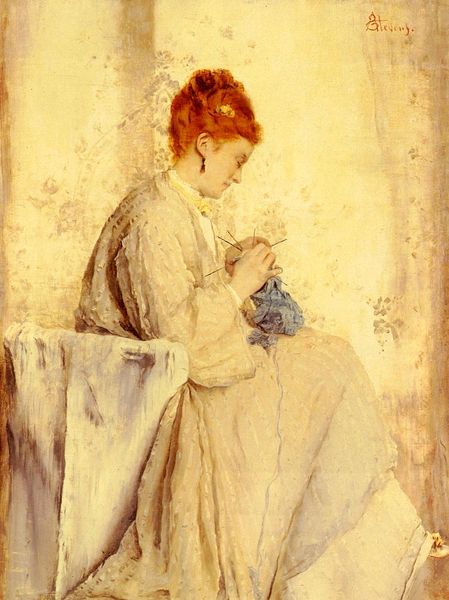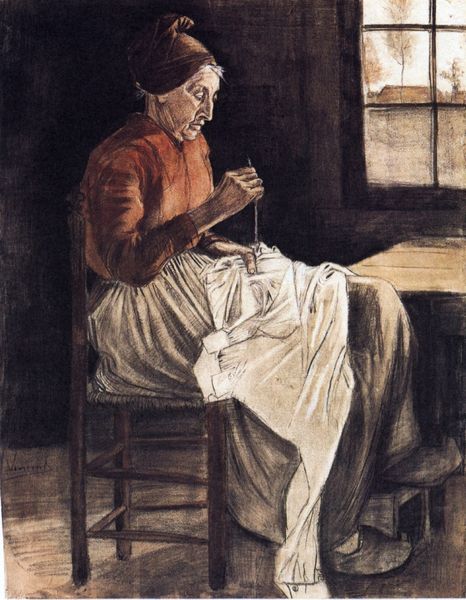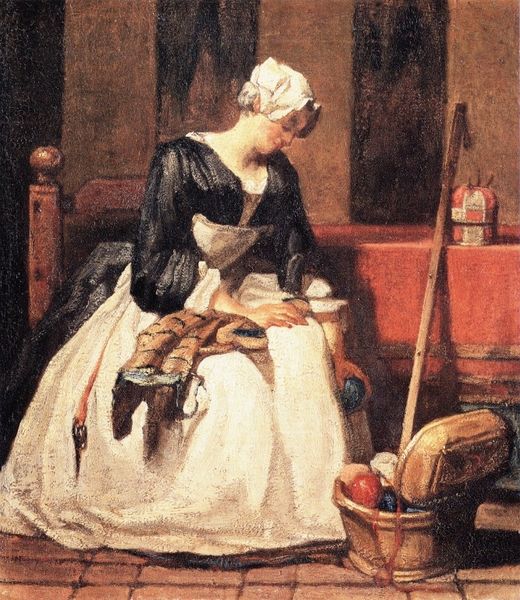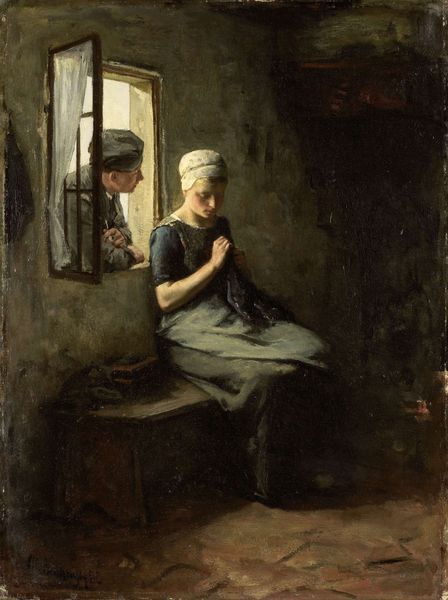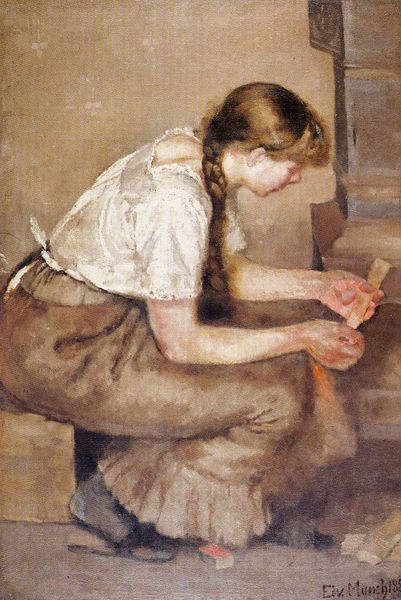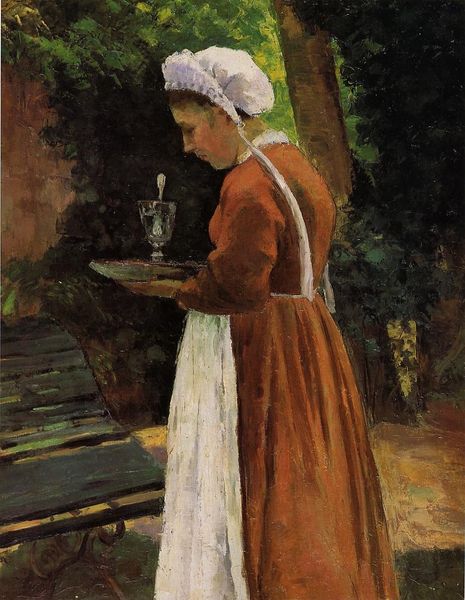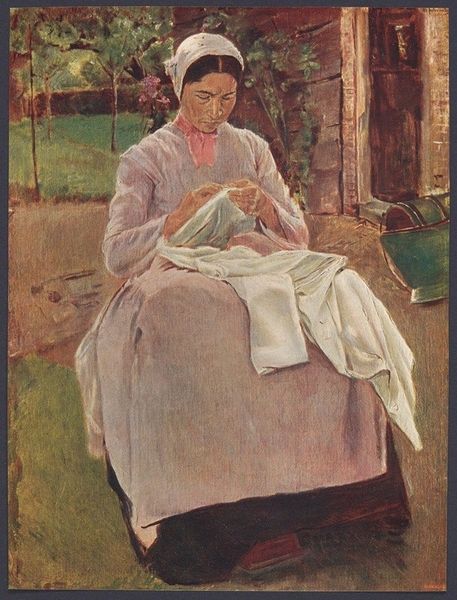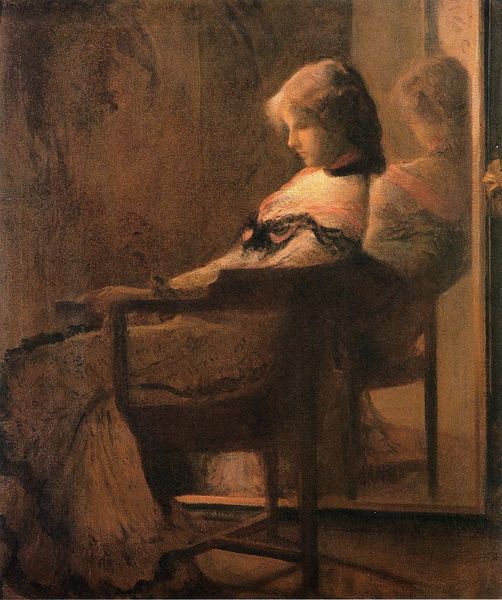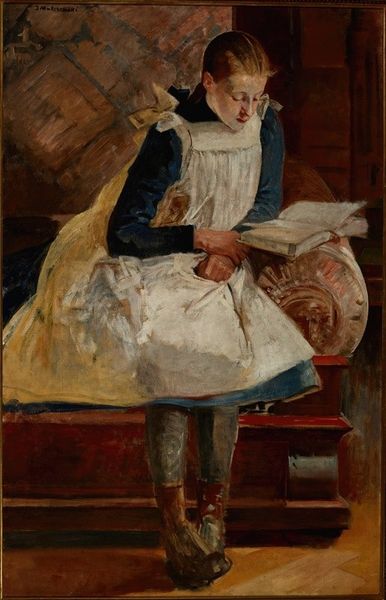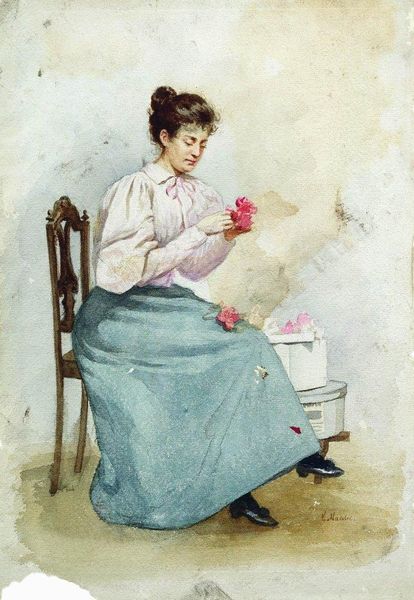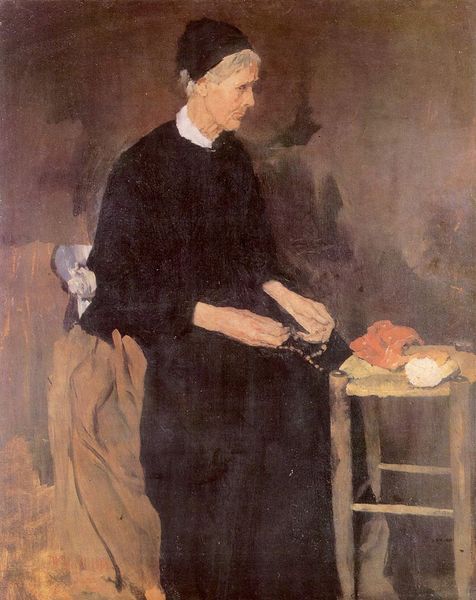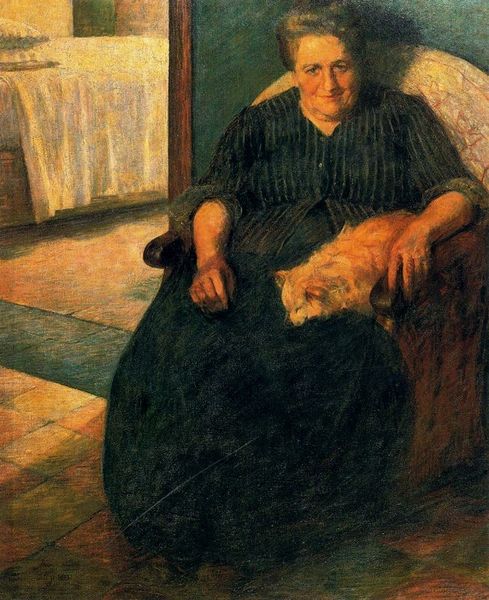
painting, oil-paint
#
portrait
#
dutch-golden-age
#
painting
#
oil-paint
#
oil painting
#
genre-painting
#
post-impressionism
#
realism
Copyright: Public domain
Vincent van Gogh made this watercolor of a woman sewing, likely in 1882 during his time in The Hague. His depictions of working-class people like this one were critical to his artistic project. Van Gogh sought to elevate the dignity of labor and the lives of ordinary people. The Scheveningen woman, with her headscarf and simple attire, embodies the traditional values and daily routines of the working class in the Netherlands. Van Gogh, deeply sympathetic to their struggles, aimed to portray their lives with honesty and respect. Understanding this artwork requires delving into the social and economic conditions of the Netherlands during the late 19th century and the role of art institutions. Research into the cultural context and the artist's biography can shed light on Van Gogh's motivations and the broader significance of this image.
Comments
No comments
Be the first to comment and join the conversation on the ultimate creative platform.
